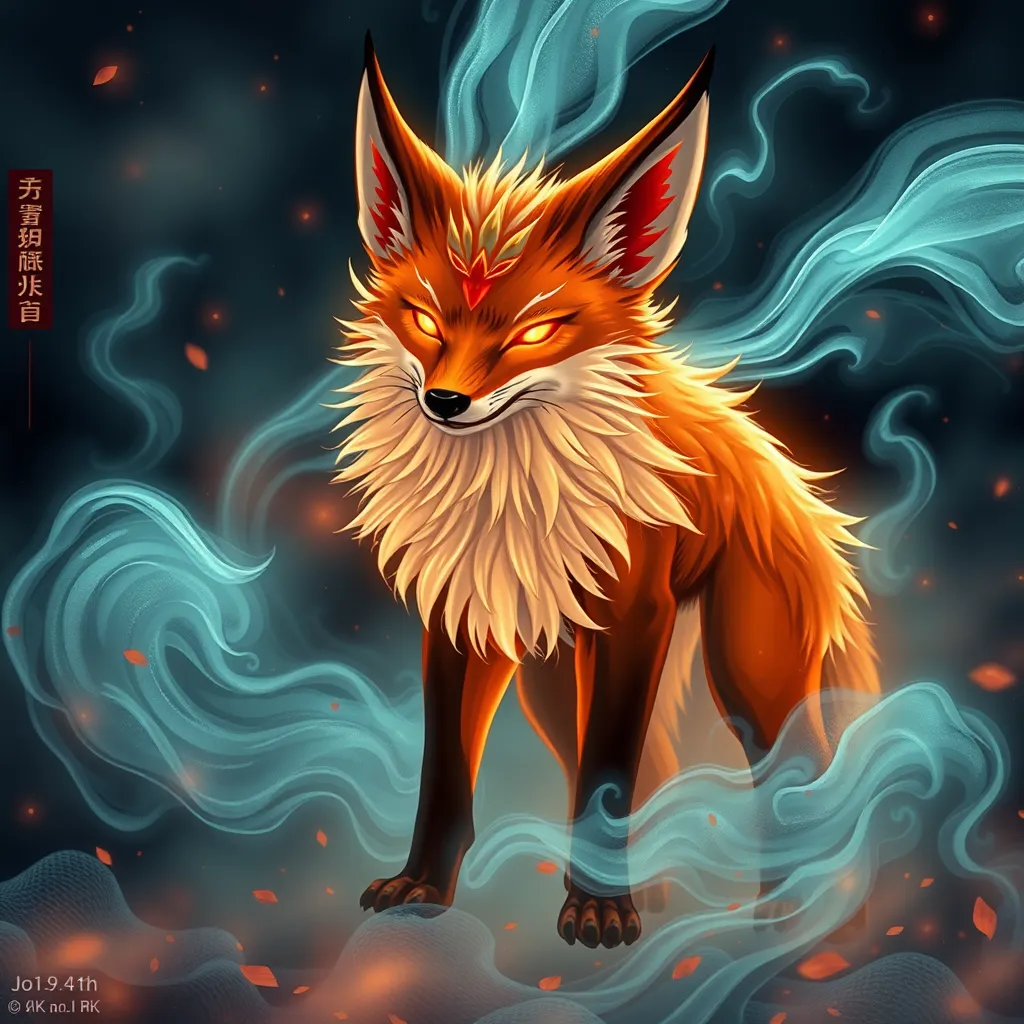Kitsune and the Supernatural: Exploring the Fox Spirit’s Role in Japanese Ghost Stories
I. Introduction to Kitsune
Kitsune, the Japanese word for fox, represents a significant cultural symbol deeply embedded in Japanese mythology and folklore. In Japan, Kitsune are more than mere animals; they embody spiritual beings with the ability to shape-shift, possess magical powers, and live for centuries. They are often depicted as messengers of Inari, the deity of rice, agriculture, and prosperity, making them integral to Shinto practices.
The significance of Kitsune can be seen in their multifaceted nature. They are characterized by their cunning intelligence, mystical abilities, and dual roles as protectors and tricksters. This complexity makes them a captivating subject in ghost stories and supernatural narratives throughout Japanese culture.
II. Historical Origins of Kitsune in Japanese Folklore
The historical roots of Kitsune can be traced back to ancient Japan, with references found in texts such as the “Nihon Shoki” (Chronicles of Japan), dating back to the 8th century. These early mentions often depicted Kitsune as messengers of the gods, establishing their connection to the divine.
Over the centuries, the mythos surrounding Kitsune evolved. From being revered as benevolent spirits, they gradually acquired a reputation for mischief and trickery. This transformation reflects broader cultural shifts, as the perception of the fox spirit transitioned from one of admiration to suspicion, depending on societal values and beliefs.
III. The Dual Nature of Kitsune: Friend or Foe?
The duality of Kitsune is one of their most intriguing aspects, embodying both protective and malevolent traits. On one hand, benevolent Kitsune are seen as guardians. For example, Inari worship involves the veneration of these fox spirits, who protect rice fields and ensure agricultural prosperity. Their presence at Inari shrines is marked by statues or images of foxes, symbolizing their protective role.
Conversely, malevolent Kitsune often embody the trickster archetype. They are known for their ability to deceive humans, leading them astray or causing chaos. This trickster nature is illustrated in numerous folk tales where Kitsune use their wits to outsmart humans, sometimes resulting in unforeseen consequences for the unsuspecting victims.
IV. Kitsune in Japanese Ghost Stories
Kitsune play a prominent role in various Japanese ghost stories, often serving as a bridge between the living and the spirit world. These narratives explore themes of love, betrayal, and vengeance, revealing the complex interactions between humans and Kitsune.
In many ghost stories, a Kitsune may take on a human form, often as a beautiful woman, to interact with humans. One such tale is that of Tamamo-no-Mae, a legendary fox spirit who transforms into a woman and captivates a powerful emperor. However, her true nature is eventually revealed, leading to tragic consequences. Such stories often carry moral lessons about deception and the consequences of one’s actions.
V. Symbolism of Kitsune in the Supernatural Realm
Kitsune serve as a potent symbol in the supernatural realm, often representing the liminal space between the human and spirit worlds. Their ability to shape-shift signifies transformation, a common theme in many supernatural narratives. This transformation reflects the duality of existence, highlighting the coexistence of good and evil.
Furthermore, Kitsune are seen as guides for lost souls, helping them navigate the complexities of the afterlife. This aspect emphasizes their role as mediators, connecting the earthly realm with the spiritual, thus enriching the fabric of Japanese folklore.
VI. Cultural Impact of Kitsune in Modern Media
The legacy of Kitsune extends beyond traditional folklore, finding a significant place in modern literature, film, and anime. These mediums have reimagined the Kitsune mythos, presenting them in diverse narratives that resonate with contemporary audiences.
- Literature: Kitsune appear in various novels and short stories, often as central figures in tales of fantasy and supernatural intrigue.
- Film: Movies like “Spirited Away” and “The Tale of the Princess Kaguya” incorporate Kitsune motifs, showcasing their magical essence and cultural significance.
- Anime: Numerous anime series feature Kitsune characters, embodying both their playful and sinister traits, blending traditional folklore with modern storytelling techniques.
This cultural impact has also influenced contemporary ghost storytelling, leading to a resurgence of interest in supernatural narratives that incorporate Kitsune, both in Japan and in global pop culture.
VII. Comparative Analysis: Kitsune and Other Supernatural Beings
Kitsune are not unique to Japanese mythology; they share similarities with other fox spirits, such as the Huli Jing in Chinese folklore. Both possess shape-shifting abilities and a dual nature, but their cultural contexts vary significantly.
Some key points of comparison include:
- Huli Jing: Typically viewed as mischievous or malevolent, with a focus on seduction and manipulation.
- Kitsune: Can embody both benevolence and malevolence, often depicted as protectors as well as tricksters.
This cross-cultural interpretation enriches the understanding of fox spirits in supernatural narratives, highlighting universal themes of transformation and duality.
VIII. Conclusion: The Enduring Legacy of Kitsune in Japanese Ghost Stories
The enduring legacy of Kitsune in Japanese ghost stories reflects their significance in shaping the cultural landscape of Japan. As symbols of transformation and duality, they continue to captivate audiences, bridging the gap between the human and spirit worlds.
As interest in folklore and supernatural narratives persists, the study and appreciation of Kitsune remain vital. Future explorations may delve deeper into their roles in contemporary storytelling, ensuring that these enigmatic fox spirits retain their place in the rich tapestry of Japanese culture.




